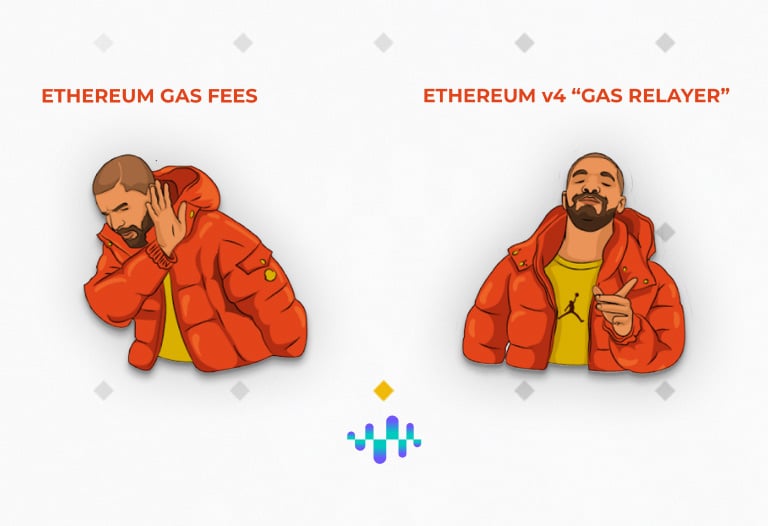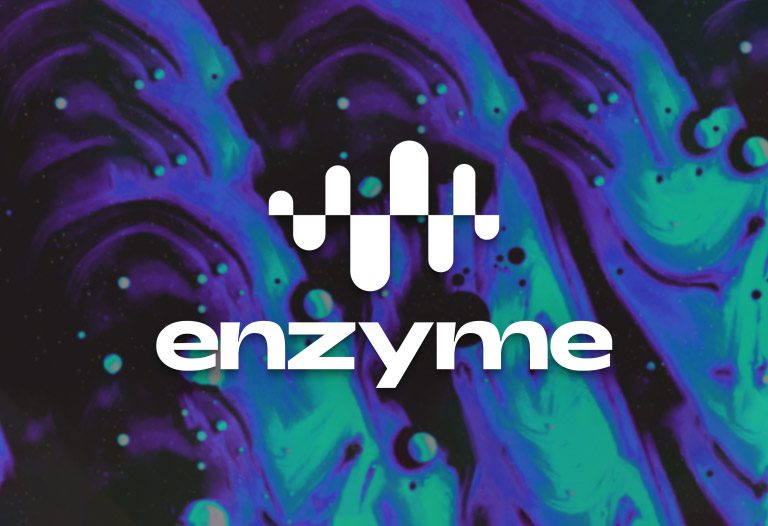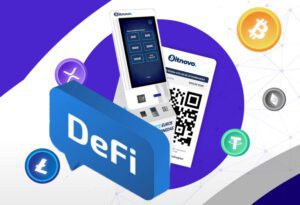
Table of Contents
ToggleAfter only a few years of existence, the enormous amount of opportunities that the crypto-ecosystem offers us through its DeFi applications, make the task of carrying out a detailed follow-up complicated. Thanks to platforms such as Enzyme, this undertaking is simplified and automated.
Enzyme was born with this objective in mind. In a single application we have a wide variety of possibilities when it comes to interacting with the DeFi world. The strategies that Enzyme offers us, enhance the achievement of results derived from the use of the famous “DeFi Money Legos”.
This project combines two layers of development that allow us to enjoy a DeFi experience schematized and concentrated in a single application. Let’s see what this interesting proposal is all about.
Understanding Enzyme
Enzyme is a platform that aims to provide a structure through which to manage assets, related to the crypto ecosystem, in a decentralized way. Which, in simple words, means that Enzyme brings together in a single platform different applications from the DeFi world and allows us to interact with them in a simplified and automated way.
This last point, automation, is a product of the development of proprietary smart contracts that carry out tasks that would otherwise have to be executed “manually” by the user. A clear example in this regard is:
Clearly, Enzyme is an application that allows users to develop their own investment strategies, in order to obtain the maximum possible return from the DeFi ecosystem.
Enzym and its objective
The team behind this project has always emphasized that its objective is to facilitate the custody of assets. Thanks to the tools provided by Enzyme, it is also simplified the calculation of the net value of assets, the returns obtained, the tracking of commissions and transactions carried out in the interaction with the DeFi ecosystem of the Ethereum network.
What is interesting is how this goal is achieved. Through the development of smart contracts, Enzyme is “connected” to certain decentralized applications. Which ones? Well, this decision is up to the DAO which is in charge of the governance of the project. There, the holders of the platform’s governance token decide which projects will be enabled on Enzyme.
Once the contracts that “carry forward” the automated management of interactions with governance-authorized platforms have been implemented, users in Enzyme select the parameters according to their strategies and the platform takes care of the necessary interactions. Simplicity, automation and security is what this team wants to deliver to its users.
Now, before getting to know the “behind the scenes” of the platform, let’s get to know its history.
A little history about Enzyme
In July 2016, the Swiss company Meloport, was ready to land on that promising new blockchain, which proposed a disruption in the way we understand finance and access to it. I am, of course, talking about Ethereum.
Thus, in the midst of the famous “boom” of ICOs, through the creation of Melon, this company took part in the revolution of the crypto world. At that time, it was just another project that sought to raise adequate capital to move forward with the development of its own idea.
The result of the ICO was the raising of a total of $2.9 million. After this successful round of funding, the team focused on the development of Melon’s protocol or platform. Two years later, in February 2019, version 1.0 saw the light of day, with functionalities such as:
-
- Single or cross-asset management
- Their governance token, MLN
- The DAO, functional from that moment on, for the decentralized governance of the protocol
Surprisingly, considering the high failure rate of those projects funded through ICO means, Melon delivered on the promises that led them to get their initial funding.
Rebranding and birth of Enzym
The following year, perhaps surprisingly, the team behind Melon believed it was necessary to implement a rebranding strategy for the brand, whose axis revolved around the modification to the name with which we currently know this project.
Contrary to what the ecosystem is accustomed to, the change of name of the project did not respond to any kind of problem or restructuring of the team. In this case, we are dealing with a decision purely and exclusively related to marketing.
The idea centered on what the name should be:
-
- Simple to pronounce and remember
- Give a sense or idea of innovation, power and future.
- Able to show a playful and fun side, related to the “ethos” of the project.
Interesting and striking story that Enzyme has to tell us.
How does Enzyme work?
We can define Enzyme Finance as a collection of smart contracts deployed on the Ethereum network, which carry out the management of interactions with different platforms in the DeFi world. This design, leads us to understand that the commissions for the transactions that will be paid in ETH, seek to cover, on the one hand the gas for using the Ethereum network and on the other hand the cost of using the Enzyme software.
In terms of its infrastructure, the protocol is made up of two layers:
-
- The background layer
- A second layer, dedicated to infrastructure
Not a minor detail, it has its own Javascript library, which facilitates the work of developers. It is now our turn to analyze these layers that make up the protocol.
Fund layer
This is where everything that is closely related to the management and control of the funds deposited in the protocol takes place. Also, this layer has the ability to design extensions and plugins for integration with other DeFi protocols. In turn, the “fund layer” is subdivided into two parts:
Hub
In the hub, it is the “place” where the funds are created and also where everything related to their management and handling is delineated.
Spokes
The Spokes section is where smart contracts are used to define those funds that are created by each fund manager. An example, in this sense, are the “Vaults”, a component used to store tokens on behalf of the funds. On the other hand, we have the “Shares”, which is the component that allows tracking and identifying the ownership of the funds.
It is evident that it is in this layer where users will carry out most of their interactions with the application.
Infrastructure layer
This layer is under the exclusive control of Melon Council, the Enzyme Finance DAO. It is the one in which the smart contracts destined to govern the platform’s investments are created and stored.
Here are, for example, some of the following “smart contracts“:
-
- “Adapter”, in charge of linking certain assets to price provider sources, to facilitate exchanges on the platform.
- “Engine”, responsible for the exchange of MLN for ETH, in order to meet costs necessary for the execution of certain transactions.
- “Price Source”, provides the general information needed for day-to-day actions within the funds.
It is evident that users will interact with this layer by participating in DAO voting. However, most of the interaction with the infrastructure layer will fall on those who develop in Enzyme.

MLN, el token de Enzyme
As you may have noticed, the ticker that identifies the token of this platform, MLN, comes from the name with which this project was born, Melon. This coin, created under the ERC-20 standard of the Ethereum network, plays important roles within Enzyme:
-
- Compensation of those who work on the network
- Governance token
- Means of payment for asset management on the platform
- Necessary to enable functions when integrating other projects with Enzyme.
As for its tokenomics, I can comment that, at the time of the ICO, a total of 1,250,000 MLN units were created and distributed. It has an infinite issuance, that is to say that there is not a certain ceiling, but every year a fixed amount of about 300,600 MLN is issued. In order to have a kind of control over the issuance, the team behind Enzyme has implemented a token burning system.
By various means, the Enzyme DAO obtains liquidity, which it then uses to buy and burn MLNs. By removing them from circulation, these tokens cease to exist and the total supply of MLNs in circulation is reduced. Although these measures do not have an immediate and direct impact on the price, it is an extremely widespread mechanism in the crypto-world, with the aim of not losing control over the amount of coins in the market.
Final words
The crypto ecosystem, no matter what network it is, often finds itself indebted to its new users, and perhaps some not-so-new users, in terms of simplicity of use.
In this way, I consider Enzyme’s proposal to be very interesting. Interfaces that concentrate and facilitate the use of different DeFi platforms are a great way to allow a wider diffusion of “DeFi Money Legos”.
Mass adoption for this ecosystem undoubtedly requires this type of tools that provide new users with methods to overcome the complex entry barriers that we all encounter at some point. Enzyme and its proposal contribute positively in this sense.




